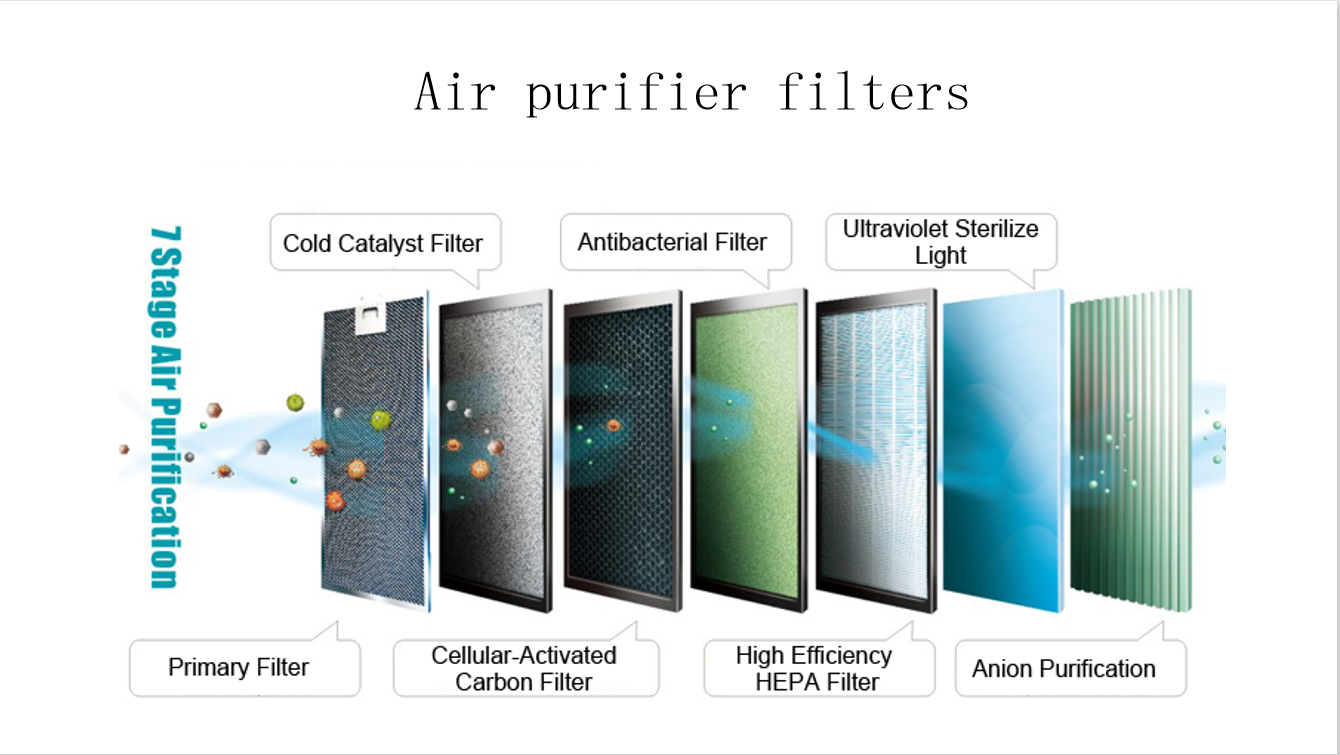What is Ioniser air purifier?and How to work?
What is Ioniser air purifier?and How to work?
What is Ioniser air purifier?and How to work?
An air ioniser (or negative ion generator)is a device that uses high voltage to ionise (electrically charge) air molecules. Negative ions, or anions, are particles with one or more extra electron, conferring a net negative charge to the particle. Cations are positive ions missing one or more electrons, resulting in a net positive charge. Some commercial air purifiers are designed to generate negative ions. Another type of air ioniser is the electrostatic discharge (ESD) ioniser (balanced ion generator) used to neutralise static charge. In 2002, in an obituary in The Independent newspaper, Cecil Alfred ‘Coppy’ Laws was credited with being the inventor of the domestic air ioniser.
An air ioniser (or negative ion generator)is a device that uses high voltage to ionise (electrically charge) air molecules. Negative ions, or anions, are particles with one or more extra electron, conferring a net negative charge to the particle. Cations are positive ions missing one or more electrons, resulting in a net positive charge. Some commercial air purifiers are designed to generate negative ions. Another type of air ioniser is the electrostatic discharge (ESD) ioniser (balanced ion generator) used to neutralise static charge. In 2002, in an obituary in The Independent newspaper, Cecil Alfred ‘Coppy’ Laws was credited with being the inventor of the domestic air ioniser.
Air ionisers have been used to eliminate the occurrence of airborne bacterial infections and to reduce static electricity buildup in electronics.
Air ionisers are used in air purifiers to remove particles from air.Airborne particles become charged as they attract charged ions from the ioniser by electrostatic attraction. The particles in turn are then attracted to any nearby earthed (grounded) conductors, either deliberate plates within an air cleaner, or simply the nearest walls and ceilings. The frequency of nosocomial infections in British hospitals prompted the National Health Service (NHS) to research the effectiveness of anions for air purification, finding that repeated airborne acinetobacter infections in a ward were eliminated by the installation of a negative air ioniser—the infection rate fell to zero, an unexpected result. Positive and negative ions produced by air conditioning systems have also been found by a manufacturer to inactivate viruses including influenza.
However, a 2013 comprehensive review of 80 years of research into air ions and respiratory function outcomes found that there was no clear support for any beneficial role in respiratory function, nor evidence for significant detrimental effect. In conclusion, “exposure to negative or positive air ions does not appear to play an appreciable role in respiratory function.”
The SARS epidemic fueled the desire for personal ionisers in East Asia, including Japan (where many products have been specialised to contain negative ion generators, including toothbrushes, refrigerators, air conditioners, air cleaners, and washing machines). There are no specific standards for these devices.
There are two types of Ionic Air Purifiers, the fanless and fan base ionizers. The fan base Ionizers uses its fan to circulate air around the room rapidly but it is noisier and consumes more energy, while the fanless types distribute air slowly hence take a longer time to purify air but are noiseless and energy efficient.
For more information,please visit www.olansigroup.com

.jpg)


评论
发表评论